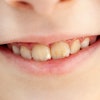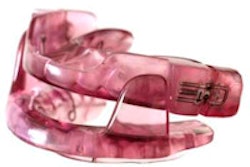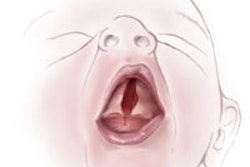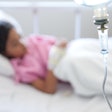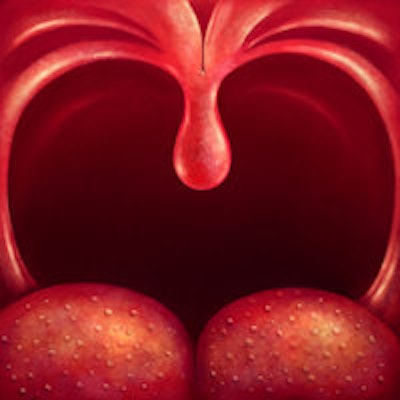
Researchers from the University of Chicago found that surgical removal of the tonsils and adenoids in children suffering from sleep apnea is associated with decreased asthma severity. The study was published in PLOS Medicine (November 4, 2014).
In the first year after the operation, the children who had their tonsils and adenoids removed had a 30% reduction in acute asthma exacerbations and a 38% decrease in acute status asthmaticus, episodes of severe asthma that do not respond to repeated courses of therapy.
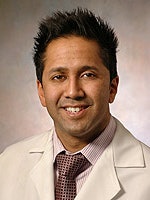 Rakesh Bhattacharjee, MD, assistant professor of pediatrics, University of Chicago. Image courtesy of the University of Chicago.
Rakesh Bhattacharjee, MD, assistant professor of pediatrics, University of Chicago. Image courtesy of the University of Chicago."Several small studies have described a strong association between obstructive sleep apnea and asthma, two common inflammatory conditions that impair breathing in children. But we wanted to test the strength of the connection when studied in a much larger population," said lead study author Rakesh Bhattacharjee, MD, an assistant professor of pediatrics at the University of Chicago and an authority on pediatric sleep medicine, in a statement.
Obstructive sleep apnea is affects an estimated 2% to 3% of all children. The removal of the adenoids and tonsils, known as surgical adenotonsillectomy, is considered standard therapy.
Asthma is the third-most prevalent chronic pediatric disease in the U.S., affecting an estimated 7.1 million according to the Centers for Disease Control and Prevention and is the third-most common cause of hospitalization of U.S. children younger than age 15.
In the study, researchers also noted that pediatric patients who received the surgery had a 36% reduction in asthma-related hospitalizations and a 26% decline in asthma-related emergency room visits. Children who did not have the surgery did not have significant reductions in these categories.
"Our study adds weight to the growing sense that obstructive sleep apnea aggravates asthma and further tips the balance toward early identification of obstructive sleep apnea," Dr. Bhattacharjee said. "This will help physicians advocate for surgical intervention, not just to eradicate sleep-disordered breathing, but also to reduce asthma severity and decrease reliance on medications in asthmatic children."
“This will help physicians advocate for surgical intervention, not just to eradicate sleep-disordered breathing, but also to reduce asthma severity and decrease reliance on medications in asthmatic children.”
Data on more than 40,000 children between the ages of 3 and 17, obtained from Truven Health's MarketScan databases were included in the study. More than 13,500 U.S. children with asthma who underwent removal of their adenoids and tonsils as treatment for obstructive sleep apnea were included. Asthma symptoms from the year before surgery to the year afterward were compared. Researchers also matched those results to the results of more than 27,000 children with asthma who still had their tonsils and adenoids.
Overall, adenotonsillectomy brought significant improvement: The frequency of acute status asthmaticus dropped almost 40%, from 562 in the year before surgery to 349 in the year after. In children who did not have surgery, such severe asthma attacks also decreased but by only 7%, from 837 to 778.
Acute asthma exacerbations fell from more than 2,200 before surgery to 1,566 after, a 30% reduction. Exacerbations for children who did not have surgery also fell from 3,403, to 3,336, a 2% drop.
Also decreasing significantly for those children who had the surgery was the incidence of secondary asthma outcomes, such as acute bronchospasm and wheezing, while rates were unchanged for those who did not. Prescription refills followed the same pattern.
The authors' concerns about the MarketScan database included that it only includes those patients with private insurance and a lack of available data why patients underwent adenotonsillectomy.
Despite the limitations, they emphasize the many plausible connections that link obstructive sleep apnea to asthma:
- Both are inflammatory diseases.
- Both share risk factors, such as allergies, obesity, and exposure to tobacco smoke.
- Severe obstructive sleep apnea is often associated with poorly controlled asthma.
A prospective, randomized, controlled clinical trial is still needed to show a direct causal relationship, Dr. Bhattacharjee noted.



